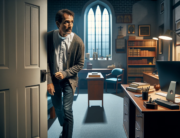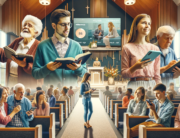Planning on reaching the younger generation with today’s common worship tools? In the words of Seth Meyers, really?
Beginning in 1950, each new generation has been raised within a learning paradigm that is significantly different from the one before it. Those born prior to 1950 may be called the “Radio Generation.” Their learning paradigm is primarily aural – they learned to pay close attention to the spoken word as they hunkered around their radios listening to see exactly what the shadow knows.
The next generation could be called the “Image Generation.” Television was widely embraced, and this generation’s learning paradigm is primarily visual – they learn through the imagery of television, posters, and illustrated books and magazines.
Next comes the “MTV Generation.” This is the generation that normalized multi-tasking and the first generation accused of having a short attention span. Their learning paradigm is sound bites, image bites, and digital bytes, all bombarding them in rapid succession.
Then comes the “Digital Generation.” These young adults don’t remember a time before the Internet. Their learning paradigm is interactive. They need more than just sound, images, video, screen technology, or rapid shifts. They expect to be able to participate in and interact with any learning opportunity.
Although it’s too early to say for sure, the next generational learning paradigm appears to include distributed learning communities that includes guided mentoring, experiential learning, and collective reflection using simulation-based virtual setting.1
Today’s multi-generational ministry presents serious challenges that can’t be solved with a cut-and-paste solution. Just adding screen technology and fill-in-the-blank sermon notes won’t do it today. It takes out of the box thinking and, honestly, it’s going to demand some good old-fashioned thought, planning, and work.
Question: How do you address the different learning styles of different generations in your church? Share your thoughts and ideas in the Comments section below.
_____________________________
1 Chris Dede, “Planning for ‘Neomillennial’ Learning Styles: Implications for Investments in Technology and Faculty,” Harvard Graduate School of Education, 2004. http://cfcc.edu/SACS/QEP/documents/PlanningforNeomillenniallearningstylesDede2004.pdf






Add Comment